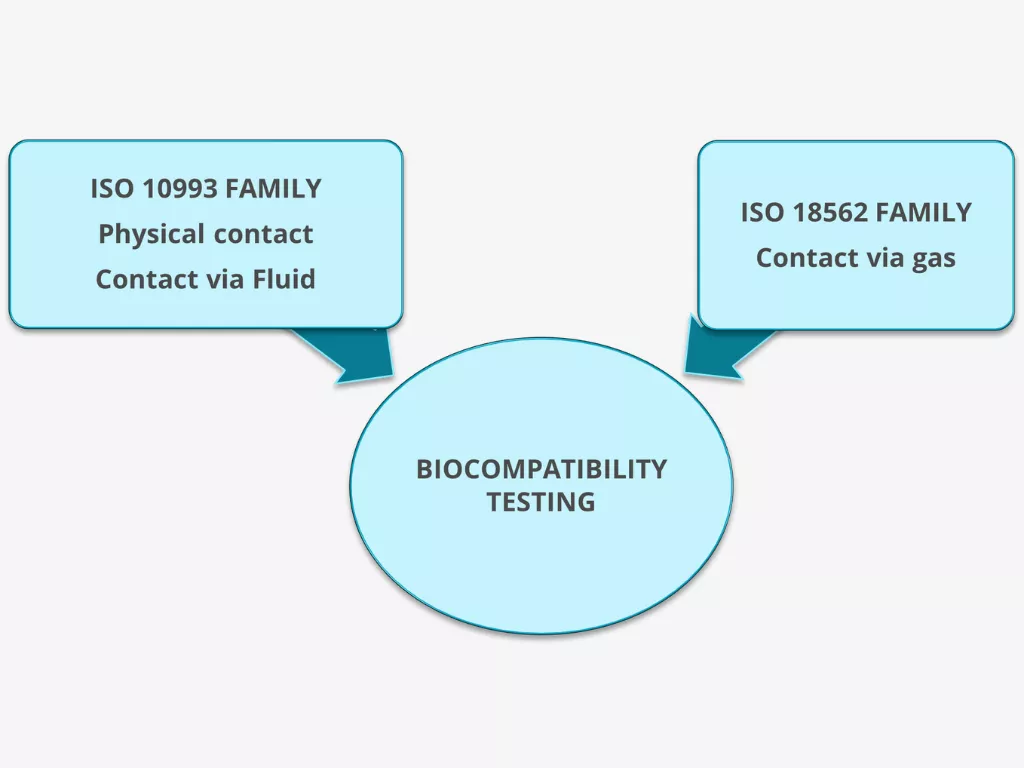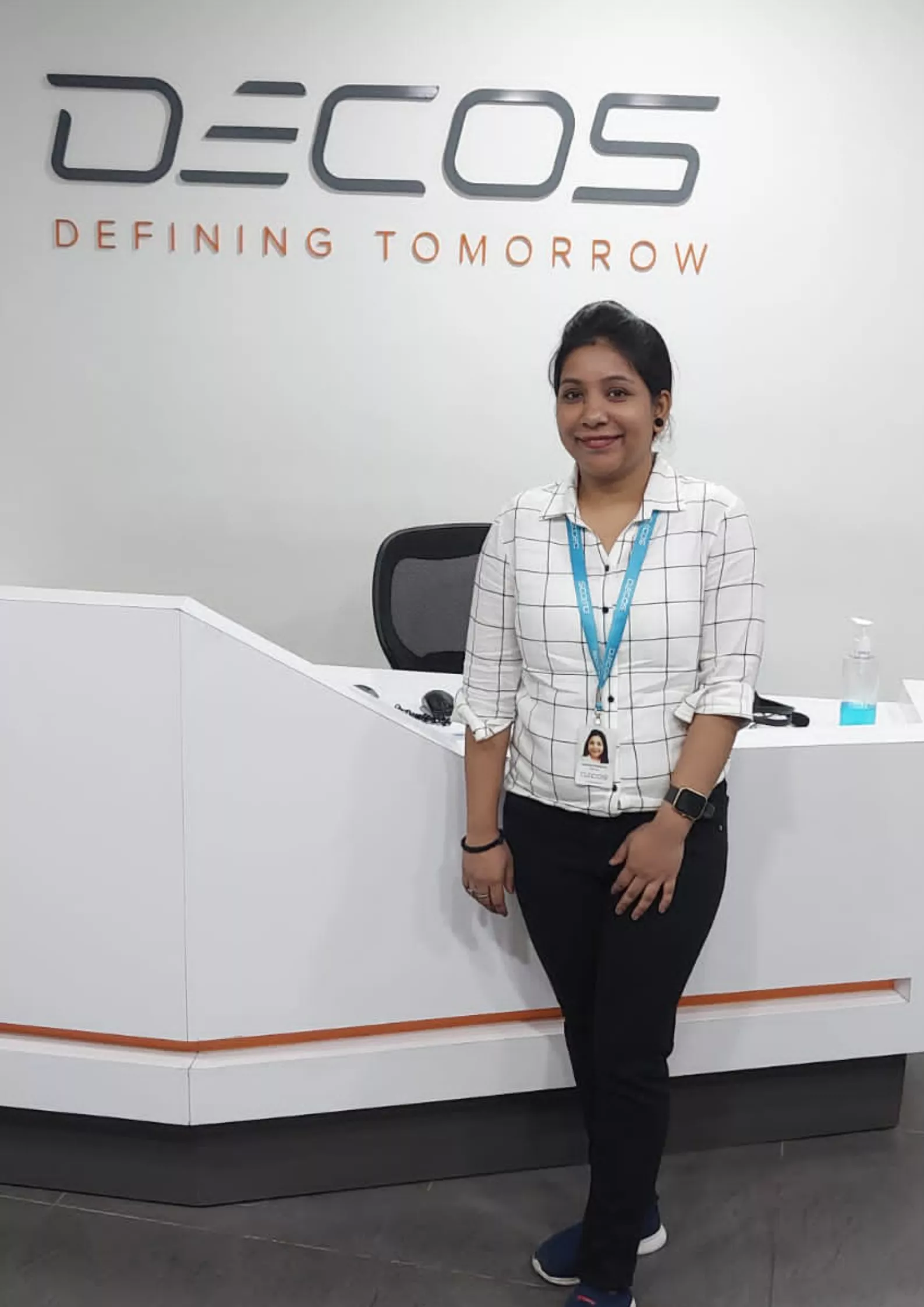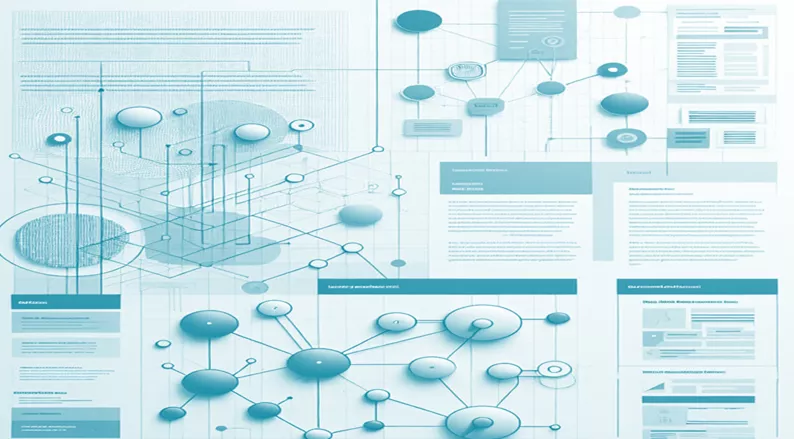ISO 18562 for Evaluation of Medical Device with a Breathing Gas Pathway
In March 2017, ISO 18562 was released to evaluate the biocompatibility of breathing gas pathways in medical devices. ISO18562 regulates the biological assessment of a medical device's gas pathways within a risk management procedure, including any parts or accessories that are designed to offer respiratory care or deliver substances to a patient via the respiratory tract in any environment.

1. Introduction
ISO 18562 addresses medical devices, parts, or accessories with gas pathways, such as
- Ventilators,
- Anaesthesia workstations (including gas mixers),
- Breathing systems,
- Oxygen Concentrators,
- Nebulizers,
- Low-pressure hose assemblies,
- Humidifiers,
- Heat and moisture exchangers,
- Respiratory Gas Monitors,
- Respiration Monitors,
- Masks,
- Mouthpieces,
- Resuscitators,
- Breathing Tubes, and
- Breathing System Filters.
ISO 18562 also addresses the inside surface of an oxygen hood, which includes the mattress, and the enclosed chamber of an incubator, which are both regarded as gas paths.
ISO 18562 SERIES

ISO 18562 Series
ISO 18562-1:2017 - Evaluation and testing within a risk management process
It covers general principles regarding biocompatibility assessment of medical device materials, which make up the gas pathway, but does not cover biological hazards arising from any mechanical failure, unless the failure introduces a toxicity risk (e.g., by generating particulates).
Points need to be considered for ISO 18562-1:2017:
- The general classification of gas pathways is based on the nature and duration of their contact with the gas stream.
- Analysing current relevant information from all sources
- The evaluation of the gas pathway's biological safety
- The identification of gaps in the data set that is currently available based on a risk analysis
- The identification of additional data sets is required to examine the biological safety of the gas pathway.
ISO 18562-2:2017 - Tests for emissions of particulate matter
ISO 18562-2 explains how to assess a medical device, its components, or accessories that are intended to administer respiratory care or deliver medications to a patient through the respiratory tract in any environment for particulate matter emissions through gas pathways.
PM2.5 and PM10 are the two sizes of particles that need to be measured. Both sizes refer to particles with sizes between 0.2µm and 2.5 µm and between 2.5 µm and 10 µm, respectively. Patients are more at risk from PM2.5 particles since they can subdue the body's natural defences. Their size enables them to enter the patient's lungs further, posing serious health hazards. The total mass of PM2.5 particles that are released cannot exceed 12µg/m3 of gas, according to ISO 18562-2. PM10 particles are less dangerous because they can't get as far into the lungs. They may yet potentially pose a risk to patients. According to ISO 18562-2, the maximum amount of PM10 particles that can be released is 150 µg/m3.
ISO 18562-3:2017 - Tests for emissions of volatile organic compounds (VOCs)
ISO 18562-3 describes testing for volatile organic compound (VOC) emissions from the gas routes of a medical device, its components, or accessories, which are designed to provide respiratory care or supply substances via the respiratory tract to a patient in any environment. The tests in 18562-3 are designed to measure the emissions of VOCs that the materials in the gas pathway add to the stream of respirable gases.
VOCs are organic molecules that have boiling temperatures between 50°C and 260°C at 101.3 kPa, which is the average atmospheric pressure. Patients who inhale gases while receiving treatment may be exposed to VOCs. Health consequences from these drugs may include irritation of the eyes, nose, conjunctiva, and throat, headaches, loss of coordination, nausea, vomiting, allergic skin reaction, dyspnea, exhaustion, and dizziness, as well as liver, renal, and central nervous system damage. They could potentially result in systemic disorders including blood clots, heart difficulties, and cancer.
Part 3 of ISO 18562 specifies how Respiratory Medical Devices (RMD) evaluations should be carried out, although it makes no suggestions for how VOCs should be collected and sampled. In general, two alternative analytical techniques are outlined for measuring VOC emissions: 1) emission sampling using sorbent tubes under ISO 16000-6 [6] or 2) canisters under ASTM D5466 [7]. For air monitoring and associated applications, these techniques are well-known and often used; tube-based methods, as described in ISO standard 16000-6, are favoured for evaluating emissions from goods and materials. [5]
ISO 18562-4:2017 {Tests for leachable in condensate}
ISO 18562-4 tests for compounds leached by liquid water condensing into gas paths of medical equipment, its parts, or accessories, intended to provide respiratory care or deliver substances via the respiratory tract to a patient in all environments. The tests in 18562-4 are designed to measure dangerous water-soluble chemicals that leak from the medical equipment, its components, or its accessories into condensate, which subsequently leaks into the patient. These tests' acceptance criteria were established in 18462-4.
When medical devices are being used as intended, ISO 18562-4:2017 does not address contamination that is already present in the gas delivered by the gas sources.
EXAMPLE The ISO 18562 series does not cover contamination that enters a medical device from gas sources like medical gas pipeline systems (including the non-return valves in the pipeline outlets), outlets of pressure regulators attached to or built into a medical gas cylinder, or room air taken into the medical device.
Additional testing may be needed if a medical device is designed to be used with anaesthetics or other medications.
3. The difference between ISO 10993 series and ISO 18562 series.
Medical devices that come in contact with patients via fluid or direct physical touch, must comply with ISO 10993. To manage biological risk, the ISO 10993 set includes a number of standards for assessing the biocompatibility of medical devices.
Devices that cause direct gas contact with patients must comply with ISO 18562.A set of standards known as ISO 18562 lays out the broad guidelines for assessing the breathing gas paths of medical devices used in respiratory treatment or to administer anaesthetic or other medicines through the respiratory tract.

Conclusion
To assess the biocompatibility of breathing components, three primary associated dangers (emissions of particulate matter, emissions of volatile organic compounds and leachable in condensate) are addressed in the March 2017 publication of the ISO 18562 standard for biocompatibility evaluation of breathing gas paths in healthcare applications. The criteria used to determine if a material or medical device is biocompatible with a breathing gas pathway are outlined in ISO 18562. Particulate matter emissions (PM2.5 and PM10), volatile organic compounds in a gas stream (VOC), and leachable in condensate must all be taken into consideration when it is anticipated that the gas channel may come into contact with the patient's respiratory system.
Decos has SMEs who can guide you with the ISO 18562 testing to assess the safety of your breathing device.
References
- ISO 18562-1:2017, Biocompatibility evaluation of breathing gas pathways in healthcare applications 1: Evaluation and testing within a risk management process
- ISO 18562-2:2017, Biocompatibility evaluation of breathing gas pathways in healthcare applications 2: Tests for emissions of particulate matter
- ISO 18562-3:2017, Biocompatibility evaluation of breathing gas pathways in healthcare applications 3: Tests for emissions of volatile organic compounds (VOCs)
- ISO 18562-4:2017, Biocompatibility evaluation of breathing gas pathways in healthcare applications-Part 4: Tests for leachable in condensate
- How to sample and analyse VOCs of respiratory medical devices according to the new ISO 18562-3, Verena S. Aichner, Eurofins BioPharma Product, Pharm. Ind. 80, Nr. 10, 1423–1427 (2018)
- ISO 16000-6, Indoor air – Part 6: Determination of volatile organic compounds in indoor and test chamber air by active sampling on Tenax TA® sorbent, thermal desorption and gas chromatography using MS or MS-FID, International Organization for Standardization, 2011
- ASTM D5466: Standard test method for determination of volatile organic compounds in atmosphere (Canister sampling methodology), ASTM International, 2015.
This blog is written by Supriya Srivastava, Senior Systems Engineer - Biocompatibility, at Decos. She is expert in Toxicology, Pharmacology, and Regulatory Toxicity Testing. She comes with a wealth of experience in medical device testing.
Decos is a cutting-edge technology services partner ready to meet your software needs in the medical domain.
If you have a question on one of our projects or would like advice on your project or a POC, just contact Devesh Agarwal.
We’d love to get in touch with you!

Discover more

Transforming Instructions for Use (IFU) with AI: Enhancing Technical Documentation

Reducing Latency in Real-Time Medical Monitoring to enhance speed, accuracy and patient safety.

